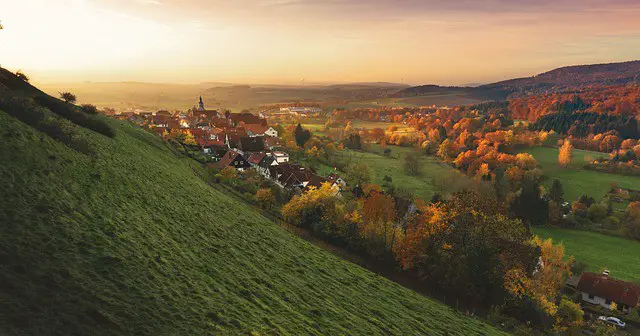Gardening is arguably one of the most interesting hobbies you can ever find. Nonetheless, space, equipment, and skills are not the only limiting factors to the activity. A good number of people that are interested in growing are often discouraged by topography. It is not uncommon to find yourself with plenty of hilly space you can transform into a beautiful garden. Well, the truth is, nothing is impossible when it comes to planting a garden. As a matter of fact, some of the most marketable crops grow well in hilly areas. Talk about fir, sheesh, pine, and spruce. But for the small-scale vegetable gardener, having to deal with a hilly area can be quite challenging. Well, nothing is rocket science about growing a garden in a hilly area. Here are some tips on how to plant a garden on a hillside.
How to Plant a Garden on a Hillside – 7 Steps
1. Select Your Site
Especially when it comes to gardening, not all hills are equal. Some areas receive more sunshine than others, whereas some receive more moisture than others. The trick is to choose the side that will receive more sunshine if you can. This is the side that faces south and also warms up faster. If you have to choose between east and west-facing slopes, the east facing slope should be your winner. This is because, on this slope, your plants will receive sunshine earlier in the day.
2. Prepare the Soil
One thing is for sure; hillsides are more prone to erosion. With this in mind, be sure to mix your soil with at least 3 inches of compost. This improves the soil structure while boosting its nutrient content. Supplement this by adding a reputed all-purpose garden fertilizer to amp up the nutrient level.
3. Construct a Suitable Garden Bed
This is where slope irrigation techniques come into play. Unlike in the case of level areas, the traditional straight rows won’t do on a hill. You need an arrangement that reduces the loss of water. In this case, you’ll want to go with curved, contoured beds running around the hill. This will reduce soil erosion and give your plants a better chance of survival.
4. Choose Your Plants Well
Unfortunately, you may find this point limiting but it is worth the mention. How the success of your hillside garden will depend on your choice of plants. You can reduce soil erosion on hilly grounds by selecting groundcover plants. Even if you choose to include your favorite gardening plants, be sure to include these ground covers to reduce soil erosion.
5. Create a Wall
Another helpful tip on how to plant a garden on a hillside is to build a retaining wall. As a matter of fact, you can easily add certain plants along the surfaces of the walls such as nooks and crannies. For instance, you could try using salvaged concrete to create a 4-foot retaining wall with spaces. Some suitable plants you could grow in wall crevices may include the following:
• Trailing lobelia
• Sweet asylum
• Candytuft
• Creeping flox
• Thyme
6. Water Your Garden Right
In addition to increased draining, the hillside exposes your garden to a higher level of moisture loss from air flow. For this reason, you’ll need to water your hillside garden more regularly that you normally would. Keep the soil moist consistently and increase the water supply once your garden plants are several inches tall. Be sure to keep your garden mulched to increase the soil’s moisture retention ability.
7. Terracing
Sometimes a big wall just won’t cut it. In this case, you might consider terracing your garden. This involves creating small walls known as terraces to reduce the loss of moisture and nutrients from your garden. As a matter of fact, terracing is one of the most recommended methods of slope irrigation.
The above few tips will surely make your hillside gardening a success. Plus the options are endless on how to plant a garden on a hillside. You can even experiment with other ways such as growing your hillside garden in pots or introducing some steps. And who said you can’t create a flat area using stilts as opposed to shifting the earth required during terracing? It’s all about embracing your landscaping challenges and deciding on the best solution.

